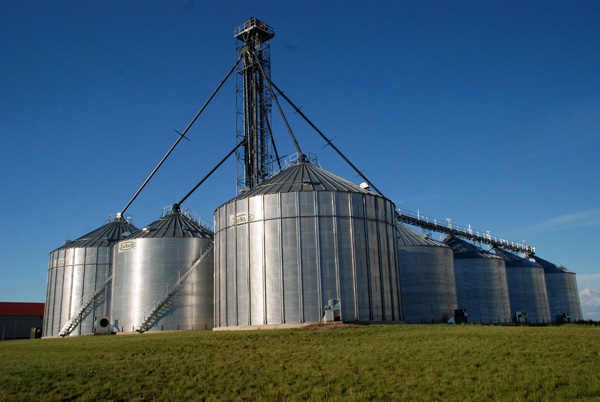April 1, 2011

“If you get caught in a flow of grain, the probability is high that you’ll die,” says Bill Field, the Purdue University researcher who has tallied U.S. grain-entrapment accidents since the 1970s. “They find you later that night when you don’t report for dinner.”
Last year produced at least 51 such accidents, a sharp spike that shattered the old record (42 in 1993). The increase was even more startling in comparison to 2007-2009, when entrapments averaged 35/year.
He attributes the increase to several factors that will continue to put growers at risk, including the huge volumes of grain that now flow through the system, out-of-condition grain, the increase in on-farm storage and the growing number of very large bins.
Deterioration in 2009 crop corn stored at high moisture also contributed to the 2010 death record. Poor-quality or spoiled corn is more likely to crust. In 2010, half of entrapment victims had entered a bin to loosen crusted, spoiled or frozen grain while unloading equipment was still running.
Field is quick to point out another grim reality: Because there is no comprehensive reporting system, grain entrapments are under-reported. Actual numbers could be 20-30% higher, he says.
Corn was the crop most commonly involved in entrapments last year, and corn states had the most accidents: 10 in Illinois, eight in Minnesota, seven in Wisconsin and five in Iowa. Almost 70% of cases occurred on farms, which are exempt from OSHA grain-handling-facility standards.
In a continuing trend, victims were often owners, operators or managerial-level employees. The largest number were in the 50-59 age bracket, but six were 15 or younger. More than half the victims died.
Ron Woollen, a Nebraska corn farmer, speaks to the human side of these tragedies. In 1999, his son Alex suffocated while working to empty a corn bin.
“Man, it happens fast,” Woollen says. “Even if you’re right there, it’s almost impossible to stop. I didn’t think the corn could be deep enough (to be dangerous), but he must have lost his footing. If he’d been able to stay upright, he would have been alright.
“It showed me that when grain is flowing, if you get caught in it, you can get buried. Don’t take anything for granted or assume that everything will be fine.”
Avoid these 7 deadly grain-bin situations
Never enter a bin when unloading equipment is running, even if the grain is not flowing.
When working with out-of-condition grain, be extra cautious about blocked flow, cavities, crusting and avalanches.
Dislodge steep or crusted piles of grain from above, using a long pole rather than a short shovel.
Always use a rope and safety harness when entering a potentially dangerous bin. Have two people capable of lifting you at the ready outside.
Consider using two-way radios to communicate, since equipment noise may keep people outside the bin from hearing you.
Don’t rely on a rope, chain or pipe ladder hanging from the roof. They may not be reliable, can obstruct flow during filling or increase drag during unloading.
Always keep children off grain vehicles and out of bins when loading and unloading.
An emergency checklist:
If the worst happens, follow these guidelines.
1. Shut off all unloading equipment.
2. Call 911 or emergency response.
3. Don’t let anyone enter the scene until first-response personnel arrive.
4. If the bin has an aeration blower, turn it on to increase airflow and help the trapped person breathe.
5. Assemble equipment to help with the rescue, including front-end loaders, shovels, plywood for cofferdams and portable augers.
6. If you are trapped in a grain bin, stay near the outer wall and keep moving. If necessary, walk until the bin is empty or the flow stops.
You May Also Like




